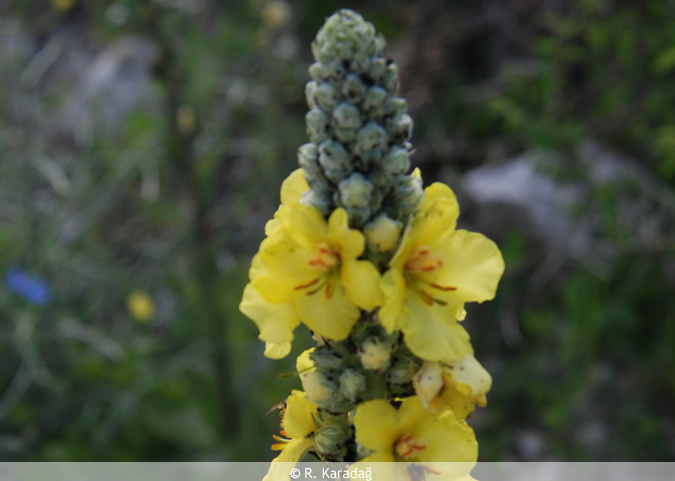Mullein, also known as candlewick and flannelleaf, is a weed that all grazing animals avoid; only occasionally goats will eat its flowers and is omnipresent in Turkey . It originated in Central Anatolia and is represented there with 235 species and 120 bastard varieties. Around the edges of its distribution to all of Europe, North Africa, and Central Asia the number of species declines. In Sweeden, there are only two, also in China , and on the Arabian Peninsula there are three to six. Mullein belongs to the figwort or snapdragon family (Scrophulariaceae).Historical Data
Turkish nomads used mullein for a black dye as late as the 1980s, and dyeing yellow with it is still known in some areas. In antiquity, the flowers were already favored as a yellow hair dye. As a dye plant, mullein is bivalent: the leaves and flowers are useful as a yellow dye from their content of luteolin, using an alum mordant; the leaves alone as black dye from their tannins, using a ferrous salt as mordant. The tannins and bitter principles probably protect the plants from being eaten by goats, sheep and cattle. But it also contains toxins (saponins), since in Greece some species of Verbascum are used as a fish poison, also in Turkey . Recently (2001) in Konya , a dyer reported toxic allergic symptoms when dyeing with dried and powdered mullein.

